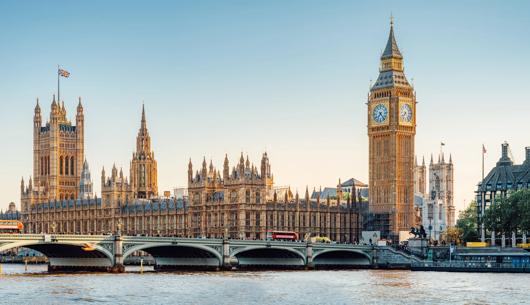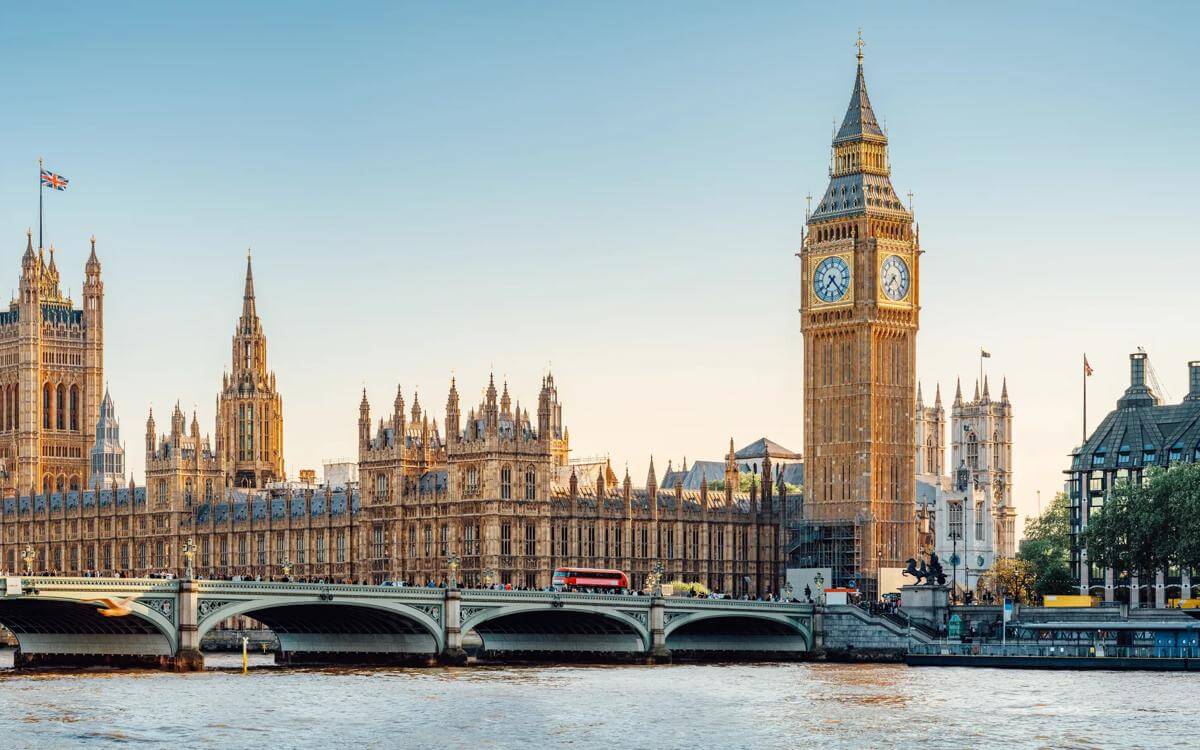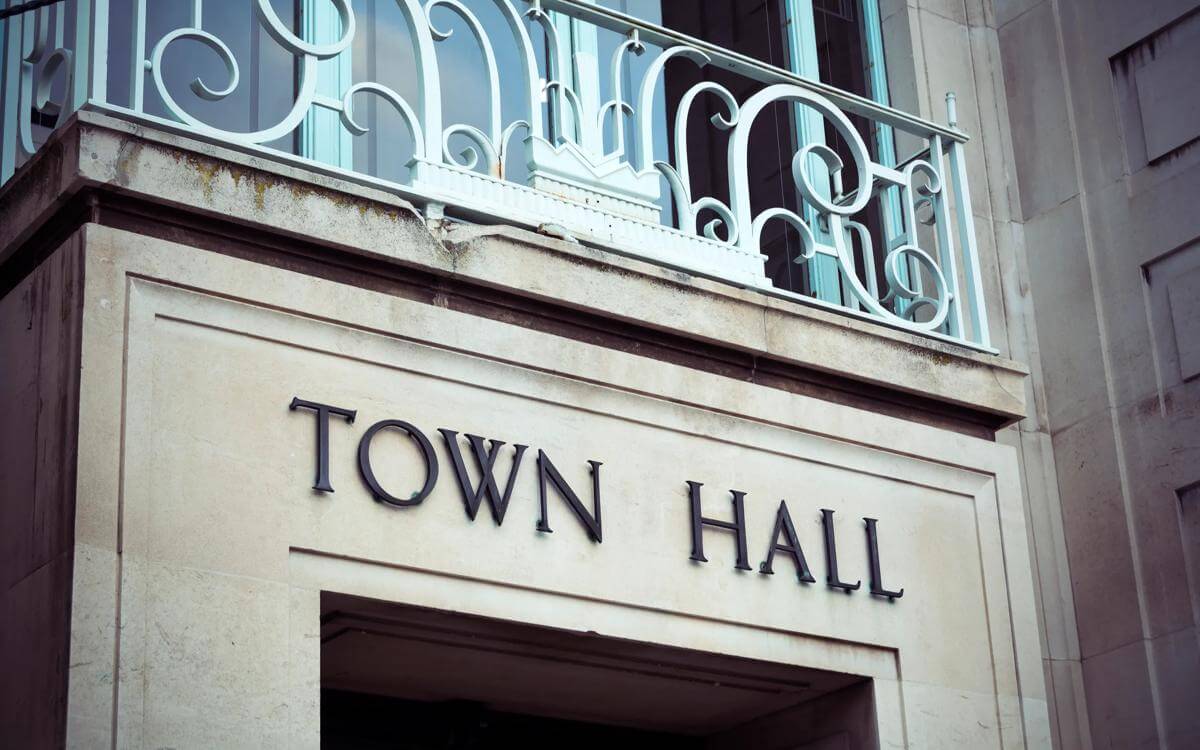Response to the Independent Review of Administrative Law panel’s call for evidence
We have drawn upon our broad experience of advising public sector bodies to frame our response to the Government’s Independent Review of Administrative Law Panel’s call for evidence.
Does judicial review strike the right balance between enabling citizens to challenge the lawfulness of government action and allowing the executive and local authorities to carry on the business of government?
Introduction
Browne Jacobson LLP is a top 50, national law firm with a dedicated public law practice.
Our Government team regularly advises central government, non-departmental public bodies (NDPBs) and arms’ length bodies and local government. Our Health team are trusted advisors to healthcare providers and regulators across the public and independent health and social care sectors and our Education team act for over one-third of the country’s largest multi-academy trusts.
We are a member of the Crown Commercial Service General Legal Services tier 2 panel and the Natural Procurement Service framework for legal services in Wales. Our clients include the Welsh Government, the National Audit Office, NHS England and NHS Improvement, Qualifications Wales and the Teaching Regulation Agency. We also work with numerous NDPBs including the JNCC, Natural England, Natural Resources Wales, the Marine Management Organisation and the Environment Agency and with local authorities across England.
Our experience is primarily in defending public bodies in judicial review proceedings, although we have brought judicial review claims on behalf of those seeking to challenge a public body’s decision, including other public and third sector organisations.
We have acted in a broad spectrum of cases covering a range of different subject matters, including health and social care, education, housing, general governance and jurisdictional questions, regulatory, planning and environment.
Our recent experience in judicial review proceedings includes:
- Successfully defending the MMO against a challenge to its decision to grant a licence under s.71 of Marine and Coastal Access Act 2009 for dredging connected with the development of Dover Western Docks (Thomson v Marine Management Organisation [2019] EWHC 2368 (Admin)).
- Advising the Welsh Government on a potential judicial review challenge to the UK’s Covid-19 quarantine rules for people arriving in the UK from abroad brought by British Airway’s owner, IAG, Ryanair and EasyJet.
- Acting for NHS England in a challenge brought by a private provider of healthcare services regarding whether the Secretary of State had the power to require that Alterative Provider Medical Services contracts should take effect as NHS contracts (SSP Health Ltd v NHS Litigation Authority [2019] EWHC 3291 (Admin)).
We feel that we are well positioned to provide a meaningful response to the Panel’s call for evidence, based upon our experience acting for a range of public bodies in judicial review proceedings.
Section 1: Questionnaire to Government Departments
1. Are there any comments you would like to make, in response to the questions asked in the questionnaire for government departments and other public bodies?
In our experience, the prospect of having a decision scrutinised through the judicial review process encourages public bodies to ensure that the decisions they take are robust, well-reasoned and made with public law principles in mind.
The prospect of a judicial review challenge ensures that decision makers take account of all material considerations, both those which support the decision they are minded to make and those which may lead to a contrary decision. It requires public bodies to keep an accurate record of the reasons why a decision was taken, or course of action pursued, and the decision-making process that was followed in determining the issue. Although this can be burdensome, it is nevertheless important for public bodies to be subject to a high level of scrutiny, given the far-reaching impact of their decisions. Accurate record keeping is important for ensuring that powers are exercised in an open and transparent manner.
By following a comprehensive decision-making process, potential risks associated with a proposal can be identified, evaluated and mitigated. This process can assist a public body in assessing the level of risk that it is willing to tolerate in a particular situation and to weigh those risks carefully against other considerations, such as the need to implement a decision quickly or to manage competing financial pressures. Better governance may be promoted by ensuring that public bodies do not overreach the limits of their powers and are cognisant of any procedural or constitutional constraints on the exercise of those powers.
In our experience, the decision making process is often less robust in situations where the risk of a challenge is thought to be low. This can result in less detailed and less well thought through decisions being made. Accordingly, it is our opinion that exempting certain decisions from scrutiny through the judicial review process may reduce the quality of decision making, and likewise public trust in the decisions made by public bodies.
2. In light of the IRAL's terms of reference, are there any improvements to the law on judicial review that you can suggest making that are not covered in your response to question (1)?
We do not consider that any improvements to the law on judicial review are necessary. However, improvements could be made to the resources available for claimants to help them better understand the purpose of judicial review proceedings and the legal tests they need to satisfy to succeed in their claim.
This would not only make it easier, quicker and cheaper for public bodies to understand a claimant’s position and to prepare a suitable response but would also help to reduce the number of unmeritorious claims being brought. We consider this further in our responses to the specific questions set out below.
Section 2: Codification and Clarity
3. Is there a case for statutory intervention in the judicial review process? If so, would statute add certainty and clarity to judicial reviews? To what other ends could statute be used?
In our opinion, the processes and procedures for judicial review already have sufficient statutory footing.
The procedures to be followed when bringing and defending judicial review claims, from issuing proceedings to concluding appeals, are governed by the rules laid out in the Civil Procedure Rules 1998 (“CPR”) and the Senior Courts Act 1981. The CPR themselves are a statutory instrument (having been made pursuant to section 1 of the Civil Procedure Act 1997) and they have already been subject to several amendments since their inception. Notably in relation to judicial review was the amendment brought about by the Civil Procedure (Amendment No. 4) Rules 2000/2092, which saw the creation of CPR Part 54.
CPR Part 54, together with the associated Practice Directions (PDs 54A-D) and the Pre-Action Protocol for Judicial Review, contain specific rules in relation to judicial review claims, and these clearly highlight where the procedure to be followed for a judicial review claim deviates from the standard procedures for other forms of civil litigation.
The ‘Administrative Court Judicial Review Guidance 2020’ (“ACJR Guidance”) expands upon and explains the rules and procedures relating to judicial review. The ACJR Guidance provides practical guidance on the rules and principles that apply at each stage of the judicial review procedure and the actions that each party should take in order to bring, or defend, an application for judicial review. Additionally, the ACJR Guidance contains a list of the standard court forms applicable to judicial review and provides external links to those forms.
Therefore, it is our opinion that there is no need for any statutory intervention in the processes and procedures for judicial review, as we explain in our response to question 5.
However, there could be merit in codifying the grounds for bringing a judicial review challenge in an amendment to the CPR or in guidance similar to that contained in the ACJR Guidance.
The grounds upon which a judicial claim may be brought have largely been established and developed through the common law. This does not cause an issue for practitioners, but it can pose difficulties for non-lawyers who often find it difficult to articulate the reasons for their complaint in terms of the grounds upon which a claim may be brought.
Codifying the grounds for judicial review would make the law more accessible for non-lawyers and may make it simpler and easier for claimants who are not legally represented to plead their claims effectively. However, we would emphasise that any codification of the grounds should not alter the scope of the grounds. If the scope of the grounds were to be altered this could undermine established public law principles and may also deny claimants with meritorious claims access to justice.
The grounds on which a judicial review challenge may be brought are well understood by experienced practitioners, and by most of the public bodies that we have advised. In our experience, the grounds are sufficiently wide to allow claimants to challenge unlawful decisions, but they are not so wide as to allow completely unmeritorious claims to proceed. Similarly, the grounds are sufficiently narrow that public bodies can have confidence that any decision that has been lawfully made, or any power properly exercised, will not become subject to unreasonable challenges. We have not encountered any situations whereby judicial review was not available when there was a need for it. Therefore, in our opinion, the correct balance has been struck between affording the public the right to scrutinise decisions and facilitating efficient and effective government action.
However, we have seen an increasing number of litigants in person bringing judicial review challenges without the benefit of legal advice and representation. Litigants in person often find it difficult to articulate the legal basis of their claims and to plead the grounds correctly. Often challenges are brought by litigants in person on the basis that they believe a public body has decided something wrongly, or because they feel a decision is unfair or detrimental to their particular interests. However, it is rare that general arguments regarding fairness satisfy the grounds for bringing a judicial review claim. This makes defending such claims inevitably more difficult (and more expensive) for public bodies who are often required to prepare responses to poorly pleaded grounds of challenge.
If guidance in a format akin to the ACJR Guidance were to be produced, which explained in a manner suitable for non-lawyers the grounds on which a judicial review challenge may be brought, this could result in better pleaded cases by claimants. In turn, this would make it simpler and less time consuming for public bodies to defend proceedings (which has the added benefit of reducing the costs that the public body may incur). It would also make it easier for the parties and indeed the court to identify and narrow the issues in dispute in any particular claim, making the procedure more streamlined and more cost effective for all concerned.
If the Panel decide that the grounds should be codified, then in our opinion, the most appropriate mechanism for achieving this would be by incorporation into the CPR. Part 54 of the CPR already outlines procedural requirements for judicial review, so an extension to Part 54 would be a natural place to codify the grounds. Supplementary guidance akin to the ACJR Guidance which explains each ground and provides examples from the case law of circumstances in which particular grounds may be pleaded could also be produced to improve clarity for non-practitioners.
The Civil Procedure Rule Committee (“CPRC”) is required to prioritise making the civil justice system accessible to all. In our opinion, codifying the grounds for judicial review would be within the CPRC’s existing remit, meaning there is already an existing mechanism through which codification could be achieved. Furthermore, as the CPRC is chaired by the Master of the Rolls and comprises members of the judiciary, legal practitioners and expert lay members, they would be well placed to implement any recommendations regarding codification.
An alternative would be to extend the availability of legal aid in judicial review proceedings, so that the number of litigants in person bringing proceedings could be reduced. In our experience, the provision of legal advice and assistance by a skilled practitioner at an early stage is extremely effective in assisting those who wish to challenge the decision of a public body to determine whether their prospective claim has a reasonable prospect of success and in weeding out unmeritorious claims before proceedings are issued. It is unlikely that litigants in person will accept the opinion of the public body they are dissatisfied with when they tell them they don’t have a basis for a successful claim. However, they are more likely to listen to independent legal advice.
4. Is it clear what decisions/powers are subject to Judicial Review and which are not? Should certain decision not be subject to judicial review? If so, which?
Overall, it is clear which decisions are susceptible to challenge via judicial review and on what grounds a claim may be brought. The availability of judicial review is well understood by practitioners and, it is relatively simple for public law practitioners to identify whether or not an organisation is a public body and therefore whether its decisions are subject to judicial review.
However, in our opinion there is room for greater clarity on the scope of the ‘public function’ test. The ‘public function’ test is a common law concept and its scope is deliberately wide for public policy reasons surrounding transparency and accountability in the exercise of public functions and the power and duties associated with those functions, but the test also serves to provide an avenue for challenging the actions of a private organisation which discharges a public function (Network Rail or academy schools, for example).
Public bodies are increasingly utilising outsourcing arrangements, joint ventures, mutual and other structures and vehicles to deliver their public functions. Where the responsibility for a public function is delegated to a private organisation through a contractual arrangement, and similarly where an inherently private organisation carries out certain public functions, it can be difficult to identify whether, and to what extent, the actions and decisions taken by the private organisation are susceptible to judicial review.
Therefore, as lines between the public and private sectors become increasingly blurred, it would be beneficial for both public law practitioners and non-lawyers if guidance was produced to illustrate the circumstances in which private bodies become susceptible to judicial review. Such guidance should consist of established examples from the common law, but it would also be beneficial for indicative examples to be included to highlight where boundaries may be drawn, although the Panel should be mindful not to narrow the scope of the ‘public function’ test.
5. Is the process of i) making a Judicial Review claim, ii) responding to a Judicial Review claim and/or iii) appealing a Judicial Review decision to the Court of Appeal/ Supreme Court clear?
As indicated in our response to question 3, the processes are clearly set out in the Senior Courts Act 1981, the CPR and the ACJR Guidance. Further guidance in relation to appeals is contained in the Supreme Court Practice Directions, which are equally clear. In our opinion, substantive reform is not necessary in this area.
The structure and content of the CPR is easy to follow for practitioners and the ACJR Guidance provides an additional layer of clarity for non-lawyers (such as litigants in person) by very clearly outlining what action needs to be taken at each stage of the process, together with references to the applicable parts of the CPR and the accompanying Practice Directions.
Despite this, litigants in person are likely to benefit from more accessible guidance to help them to understand whether they have a legal basis for their claim and the process they need to follow if they decide to issue proceedings. The provision of case studies to make the process easier to understand (such as those produced by the Information Commissioner’s Office and the Ombudsmen) would be beneficial.
Section 3: Process and Procedure
6. Do you think the current Judicial Review procedure strikes the right balance between enabling time for a claimant to lodge a claim, and ensuring effective government and good administration without too many delays?
Yes, the requirement that judicial review proceedings must be brought promptly and in any event within three-months strikes the right balance between requiring challenges to be brought promptly, while also providing sufficient time for the parties to comply with the pre-action protocol so that proceedings are not commenced unnecessarily.
The decisions that are most commonly challenged by judicial review are often of commercial or community importance, so it is right that these decisions should be challenged promptly. Shorter limitation periods are already imposed in cases where it is particularly important that the implementation of decisions is not unreasonably delayed by the prospect of proceedings being issued, for example in challenges relating to public procurement (30 days) and challenges under the planning regime (six weeks).
In general, the longer the period that a decision remains open to challenge, the less certainty there can be that the decision is final. This increases the risk for public bodies seeking to implement those decisions and those private bodies seeking to benefit from a public body’s decision. This can have a detrimental effect on local, regional and national projects and programmes because the implementation of key decisions, contracts and strategies could be unnecessarily delayed; particularly where a public body takes the view that the costs involved in implementing their decision are too great to commence until the limitation period expires.
As a result, it is our opinion that the current limitation periods for bringing judicial review proceedings should not be extended. Similarly, we do not believe that the current limitation periods should be shortened either.
If the deadline for commencing judicial review proceedings was shortened to say, two months, then we anticipate that this will result in more proceedings being issued prematurely as claimants would be keen to ensure that they are not refused permission on the basis that they have not acted promptly enough, and they would simply issue proceedings more quickly.
Discussions at a pre-action stage are likely to become less meaningful (and less effective in preventing claims from being issued) because there may not be sufficient time for the parties to fully assess the prospects of their own case, to engage in careful, detailed and considered pre-action correspondence, to analyse and consider each other’s arguments and to identify and disclose key documents that might affect a party’s assessment of the merits of the case. As a result, it is likely that there would be an increase in proceedings being issued and then immediately stayed to allow more time for a resolution to be reached, or simply more judicial review claims proceeding to at least the permission stage. This would place an unnecessary burden on both the court’s and public bodies’ time and resources.
However, one reform we would suggest is that the timeframe in CPR 54.14 is increased to 56 days. Currently, CPR 54.14 requires defendants to file evidence and detailed grounds of resistance within 35 days of the date that the court grant permission to the claimant to proceed with the claim. This is the most labour-intensive aspect of defending judicial review proceedings and places a significant burden on public bodies. It is frequently the case that public officials have to divert their time and resources away from their usual day job for several days (sometimes weeks) to compile the information necessary to meet this deadline. There is usually a period of at least a few months between the deadline for filing detailed the grounds and evidence, and the date the claim is set for trial. Therefore, increasing the period from 35 to 56 days would not cause any delay to the overall timeframe for finally determining an application for judicial review.
7. Are the rules regarding costs in judicial reviews too lenient on unsuccessful parties or applied too leniently in the Courts?
The rules regarding costs in judicial review cases are satisfactory, but issues arise where the claimant does not have the financial means to discharge a costs order made against them in the event that their claim is unsuccessful. Consequently, the costs burden too often falls on public bodies in judicial review cases because there is little chance of a public body recovering their costs (at least not in full), even when they have acted lawfully and successfully defend a judicial review challenge.
Public bodies are generally reluctant to aggressively pursue costs order against individual citizens, even when the individual has the financial means to discharge the order. This is commonly due to reputational considerations but there is also a reluctance by public bodies to take punitive measures against individuals who are generally acting in the public good.
Such cost recovery difficulties would not realistically be addressed by amending the costs rules, encouraging stricter application of those rules or through greater enforcement of costs orders.
Claimants can apply for protective costs orders, which can limit or completely remove the costs risk to a claimant in bringing a judicial review claim. It provides an important means of allowing genuine “public interest” litigation to proceed, especially where actions are brought by individuals, charities or community groups with little funding and pro bono legal representation.
Conversely, security of costs orders, though available in judicial review proceedings, are rarely granted to defendants. More routine use of such orders requiring claimants to make a payment to court to cover the costs of the defendant’s acknowledgement of service in the event that permission was refused, would allow public bodies to recover a greater proportion of their costs where the claimant is unsuccessful at this stage. It may also encourage claimants to more carefully consider the costs implications associated with bringing an unmeritorious claim prior to issuing their application.
However, judicial discretion is essential to ensure that the costs associated with bringing proceedings would not deter claimants and reduce access to justice where there is a genuine meritorious claim.
Pre-action costs are also generally not recoverable. We consider that this is an area that could benefit from reform in circumstances where unmeritorious claims are brought despite the public body showing that the claim was wholly without merit at the pre-action stage.
Public bodies frequently incur costs by taking external legal advice when preparing a response to a claimant’s pre-action protocol letter. This can provide a cost-effective means of robustly defending a claim and can result in a claimant deciding not to issue formal proceedings. However, where a public body outlines a clear and robust defence at the pre-action stage but the claimant still decides to issue proceedings despite there being little prospect of success, then there is an argument that public bodies should be able to recover their pre-action costs as well as the costs of preparing their acknowledgement of service, particularly where the court ultimately decides at the permission stage that a claim is totally without merit.
It can be particularly difficult for public bodies to recover their costs in environmental claims because the UK is a signatory to the Aarhus Convention, which requires the UK to allow claimants to challenge decisions with an environmental impact without costs being a barrier. A costs cap will usually be applied in such cases, although the CPR do allow public bodies to ask the court to disapply or uplift the cap where the claimant has the means to discharge a larger costs order.
The courts tend to apply a broad interpretation to what constitutes an environmental claim, as protection of the environment is generally regarded as a public good. However, we have acted in judicial review claims brought by private individuals against public bodies where their concern is primarily a private financial interest rather than one of wider community interest. This is particularly common in challenges to local planning authorities’ decisions to grant planning permission or to decline to take planning enforcement action in respect of a neighbouring property, where the claimant’s primary concern is the impact of the development on the value of their own property.
Clear guidance on what constitutes an environmental claim for the purpose of exercising Aarhus Convention rights, based on decided cases, would certainly be beneficial.
Where claimants act as litigants in person rather than by instructing solicitors to act on their behalf, the costs of proceedings often become more expensive for public bodies, particularly at a pre-action stage. Wasted costs order are not available where the claimant is without legal representation and there are genuine public policy reasons for this. Nevertheless, it does mean that there are rarely any cost implications in circumstances where a litigant in person does something that, had a solicitor had done it, could well have given rise to an application for a wasted costs order.
Litigants in person often send a lot of correspondence (without incurring the costs of instructing lawyers to draft that correspondence) and tend not to adhere to court rules and procedures as diligently as a claimant who had legal representation would (which is to be expected and quite rightly the courts allow leeway when claimants are litigants in person). This can lead to significant cost implications for public bodies.
In a recent case we were involved in, a litigant in person issued judicial review proceedings which were wholly unarguable against six different public bodies. All six defendant public bodies received numerous items of correspondence from the claimant every day over a period of twelve months and the claimant made dozens of applications (which were wholly without merit). At one stage the claimant discontinued their claim only to subsequently withdraw their notice of discontinuance the following day because they had changed their mind. The claimant was unsuccessful at permission stage and refused permission to appeal and a costs order was made against them. However, approximately 70% of our defendant’s costs were unrecoverable because they were incurred at the pre-action stage or not directly connected with the costs of preparing the defendants’ acknowledgements of service.
8. Are the costs of Judicial Review claims proportionate? If not, how would proportionality best be achieved? Should standing be a consideration for the panel? How are unmeritorious claims currently treated? Should they be treated differently?
Judicial review proceedings are expensive for both claimant and defendant, but are, in our view, proportionate. Judicial review is meant to be a remedy of last resort and so it is right that other avenues of redress (such as statutory appeals processes or formal complaints procedures) should be considered and exhausted prior to judicial review proceedings being issued. Arguably, pursuing alternative courses of action could be encouraged if the courts were stricter in refusing claimants permission to proceed with a judicial review claim when another remedy was available, but ultimately the responsibility should be on the claimant to choose the most appropriate avenue for resolving their claim.
The cost of issuing formal proceedings can be a deterrent for some claimants, but in our view, this is not currently restricting access to justice. Instead, the financial risks associated with bringing an unsuccessful claim tend to cause claimants to (re)assess the strengths of their claim as the pre-action stage concludes, meaning that in general, the claims with greater merit are the ones that proceed. Early consideration of costs in judicial review proceedings could be increased in order to remind those litigants with weaker claims of their potential liabilities. Requiring claimants to file and serve details of their financial means to settle any potential costs order when their file their claim form may also assist in this regard.
If the costs of judicial review were decreased (by methods such as removing or lowering court fees or by an increased use of cost capping orders), then in our view this is likely to lead to an increase in proceedings being issued because there will be less financial risk for the claimant if they are unsuccessful in their claim. This may have the undesirable effect of encouraging unmeritorious claims or pressuring public bodies to unnecessarily remake decisions because they lack the resources to defend a claim. It is already the case that where a claim is borderline, a public body may choose to remake their decision rather than contest the claim because of cost implications.
Standing is almost never an issue in our view. Arguably, there are circumstances in which claimants with insufficient interest in a particular decision could challenge that decision, but the costs of bringing proceedings almost always prevent this.
9. Are remedies granted as a result of a successful judicial review too inflexible? If so, does this inflexibility have additional undesirable consequences? Would alternative remedies be beneficial?
The remedies currently available in judicial review proceedings are both adequate and appropriate.
Judicial review is fundamentally different to other types of civil litigation in that its primary purpose is not compensation, damages or other forms of financial redress (albeit a damages claim can be joined to judicial review proceedings). Claimants bring judicial review proceedings where they are unhappy with how a public body has acted or reached its decision and therefore, what the claimant is actually seeking to achieve is for the public body to reconsider their actions and re-make the decision (preferably in line with the claimant’s own perspective). Therefore, claimants are typically seeking to obtain a quashing order so that the decision is set aside, meaning the public body is required to re-make its decision correctly or drop its proposal. The court also has the power to direct the public body to take action through mandatory orders (e.g. to comply with its statutory duties) or issue an injunction or prohibitory order to prevent an action from being taken (e.g. where a public body is, or would be, acting outside of the remit of its powers). In our opinion these, combined with quashing orders, are sufficient to provide adequate remedies to successful claimants.
Claimants might wish to see damages more readily available as a remedy in judicial review, but this is not appropriate. The purpose of judicial review is to assess the lawfulness of public body actions and decision-making with a view to upholding constitutional limits that protect public interests, rather than financially punishing a public body for its error when no other course of action is available. If a claimant is solely concerned with seeking damages, then it would not be appropriate to issue judicial review proceedings in the first place and instead the claimant should pursue an alternative course of action.
Claimants might also wish to see remedies that give the court greater powers to intervene in the decisions of a public body, such as the court having powers to substitute the public body’s decision for that of its own. It should be noted that this power already exists in very limited circumstances (pursuant to s.31 Senior Courts Act 1981 and Part 54.19 of the CPR) and it is imperative that the scope of the court’s power in this respect is not extended. To do so would fundamentally undermine the ability of public bodies to make decisions; it is correct that decisions which are quashed by the court are remitted back to the public body to be remade.
However, a potential reform would be to instigate a new process allowing for a remedy akin to a declaration to be obtained quickly at an early stage in proceedings. This could take the form of a joint application by the parties for a declaration on a piece of legislation or particular issue, either at a pre-action stage or early on during proceedings. The parties could submit their respective legal interpretations, together with factual details (if necessary, to provide context and aid understanding of each party’s interpretation) to the court for a declaration to be made. To reduce the burden on the court and to keep costs lower, an application could be constrained to a single issue in dispute and there would not need to be a hearing (unless either of the parties or the court requested one). Use of this process could aid negotiations between the parties and ultimately reduce the number of cases which proceed to trial. Declarations could also be published to provide persuasive precedent for future claims.
10. What more can be done by the decision maker or the claimant to minimise the need to proceed with judicial review?
In our opinion, there is little more that could or should be done. In our experience, judicial review claims are most commonly brought where questions of law need to be decided and this is rarely something which the parties themselves can resolve. Our suggested reform in our response to question 9 regarding the use of declarations could help dispense with the need for judicial review proceedings to progress to a substantive hearing in some limited circumstances.
There could be some merit in a more robust pre-action protocol for judicial review. Claimants are currently required to send letters before claim “in good time”, but this could be amended to provide a specific limitation period for letters before claim that would permit public bodies enough time to consider and respond in a meaningful way before proceedings are issued (e.g. one month or six weeks).
Similarly, public bodies could then be allowed more time to prepare their response, perhaps 21 days as opposed to the current 14. This could make pre-action discussions between the parties more meaningful because public bodies will have more time to consider, investigate and respond thoroughly to the claimant’s concerns and likewise, there would be time for the claimant to decide whether to formally commence proceedings after receiving the public body’s response.
11. Do you have any experience of settlement prior to trial? Do you have experience of settlement ‘at the door of court’? If so, how often does this occur? If this happens often, why do you think this is so?
Settlement in judicial review is quite rare and, if there is a settlement, it will tend to happen at a pre-action stage before formal proceedings have been issued.
After a public body receives a pre-action protocol letter, it has an opportunity to review its decision in light of the claimant’s arguments, assess the risks of litigation and then decide whether to remake the decision or contest the claim.
Once the claim is issued, it is usually after alternative efforts to settle have been exhausted and both parties agree that the court should decide the issue.
Where cases are settled after proceedings have commenced, it is usually for one of the following reasons:
- some new event has occurred which renders the proceedings academic. This might occur where the public body makes a new decision or corrects some deficiency in the original decision (or lack of a decision) under challenge. For example, in proceedings brought under the Housing Acts, the local housing authority will continue searching for suitable accommodation during the course of proceedings which can result in an offer being made before a case reaches substantive hearing. In such cases, proceedings are usually withdrawn by consent.
- the disclosure provided by the public body at the time of filing evidence (e.g. after permission has been granted) affects the merits of the claim such that it becomes much more apparent which party is going to succeed. In these circumstances, the party who is likely to fail often withdraws.
- the costs of proceeding to trial are such that it is better to concede if prospects are low or finely balanced. Even where the balance appears slightly more in favour of the public body’s argument, we have seen public bodies choose to concede and restart the decision-making process. This is because it is often considered more cost effective and less time consuming to start over than run the risk of potentially losing at substantive hearing and being ordered to do so by the court; or
- there are political or public relations considerations which mean that the public body would like to avoid adverse judicial scrutiny and media attention.
12. Do you think that there should be more of a role for Alternative Dispute Resolution (ADR) in Judicial Review proceedings? If so, what type of ADR would be best to be used?
In our experience, ADR has a limited role in judicial review proceedings. There is usually significant discussion between the parties and attempts to resolve the dispute out of court (for example through statutory appeals processes or complaints procedures) before proceedings are issued. Additionally, judicial review challenges frequently involve a question of law which makes it is unlikely that the dispute will be resolved through a non-litigious form of dispute resolution.
There is already a requirement within the Pre-Action Protocol for Judicial Review for the parties to consider ADR, although ADR is often unsuitable for judicial review because of the nature of the remedies that the claimant is seeking. For example, claimants frequently want decisions made by a public body to be quashed and then subsequently remade by the public body in a way that corresponds to the claimant’s view. In some cases, ADR (by way of pre-action exchanges and negotiation between the parties) might achieve this purpose because the public body might acknowledge they have made an error and agree to correct it. However, in the majority of cases, ADR would be unsuccessful because:
- the public body believes that its own interpretation of the legislation is correct. In such circumstances, the only realistic way to resolve the dispute is to seek a court declaration on the law;
- the public body is unable to change its decision due to legal restrictions or for reasons of public policy (e.g. it is not within the public body’s power to take the actions proposed by the claimant). Again, this is something which cannot realistically be resolved without the court’s assistance;
- the time and costs associated with judicial review are already significant and the parties are unwilling to delay the issue and/or increase costs further by engaging in more formal forms of ADR (such as mediation) where it is unlikely to achieve a mutually agreeable outcome.
As mentioned in our response to question 9, a process to allow a declaration on the law to be obtained at an early stage may help to address the issues discussed above.
Furthermore, the involvement of the Parliamentary and Health Service Ombudsman or the Local Government and Social Care Ombudsman as a means of ADR should not be promoted in judicial review claims. In our experience, the Ombudsman process is overly bureaucratic and costs public bodies a significant amount of time and money without progressing the dispute much closer to resolution (if at all).
The role of the Ombudsman is fundamentally different to that of the courts. The Ombudsman’s role is to investigate complaints with a view to deciding whether a complainant has suffered injustice as a result of maladministration, which can involve the Ombudsman intervening in the complaint and making awards to an applicant to put right their injustice where the court would not (such as by awarding financial compensation). In contrast, the role of the court is to ascertain whether a public body has acted lawfully, and where it has acted lawfully but nevertheless the claimant has suffered an injustice, the courts will not intervene.
Both the Ombudsman and the court may reach the same conclusion that a public body has a duty to take a particular action, and has failed to do so, although there may be differences in their respective approaches as to whether it is appropriate to grant the claimant a particular remedy (or indeed any remedy at all besides a declaration).
However, Ombudsmen have a wider investigatory remit than the court, which can result in an Ombudsman considering information which a court might not accept. Additionally, questions of fact are not necessarily subject to the same degree of scrutiny as they would be in court proceedings.
Ombudsman decisions are not binding on the court (nor should they be) precisely because the role, remit and investigate approach of the Ombudsman is different to the supervisory role of the courts.
In our view, the two processes are distinctly separate, and more guidance should be available for claimants as to which avenue is most appropriate for their complaint. Although there can be some crossover, in many claims for judicial review the crux of the dispute involves a point of law which should be determined by the courts and not by an Ombudsman.
There is a role for the Ombudsman as a form of ADR for potential judicial review claims, but only in limited circumstances. Where complaints are made to the Ombudsman which involve questions of law, then claimants should be directed to pursue judicial review proceedings through the court system as Ombudsman do not have the requisite powers to decide points of law.
13. Do you have experience of litigation where issues of standing have arisen? If so, do you think the rules of public interest standing are treated too leniently by the courts?
Standing has never been a barrier for a claimant in the cases in which we have acted in recent years. The courts apply a wide interpretation of the standing requirements, so much so that there could be some merit in removing the need to demonstrate standing.
On the occasions when we have attempted to raise arguments relating to insufficient standing when acting for NHS bodies, the courts have taken an unsympathetic view on the basis that all users of the NHS have a sufficient enough interest in decisions made about the commissioning and provision of its services to challenge them.
Contact

Victoria Searle
Principal Associate
victoria.searle@brownejacobson.com
+44 (0)330 045 2363








































